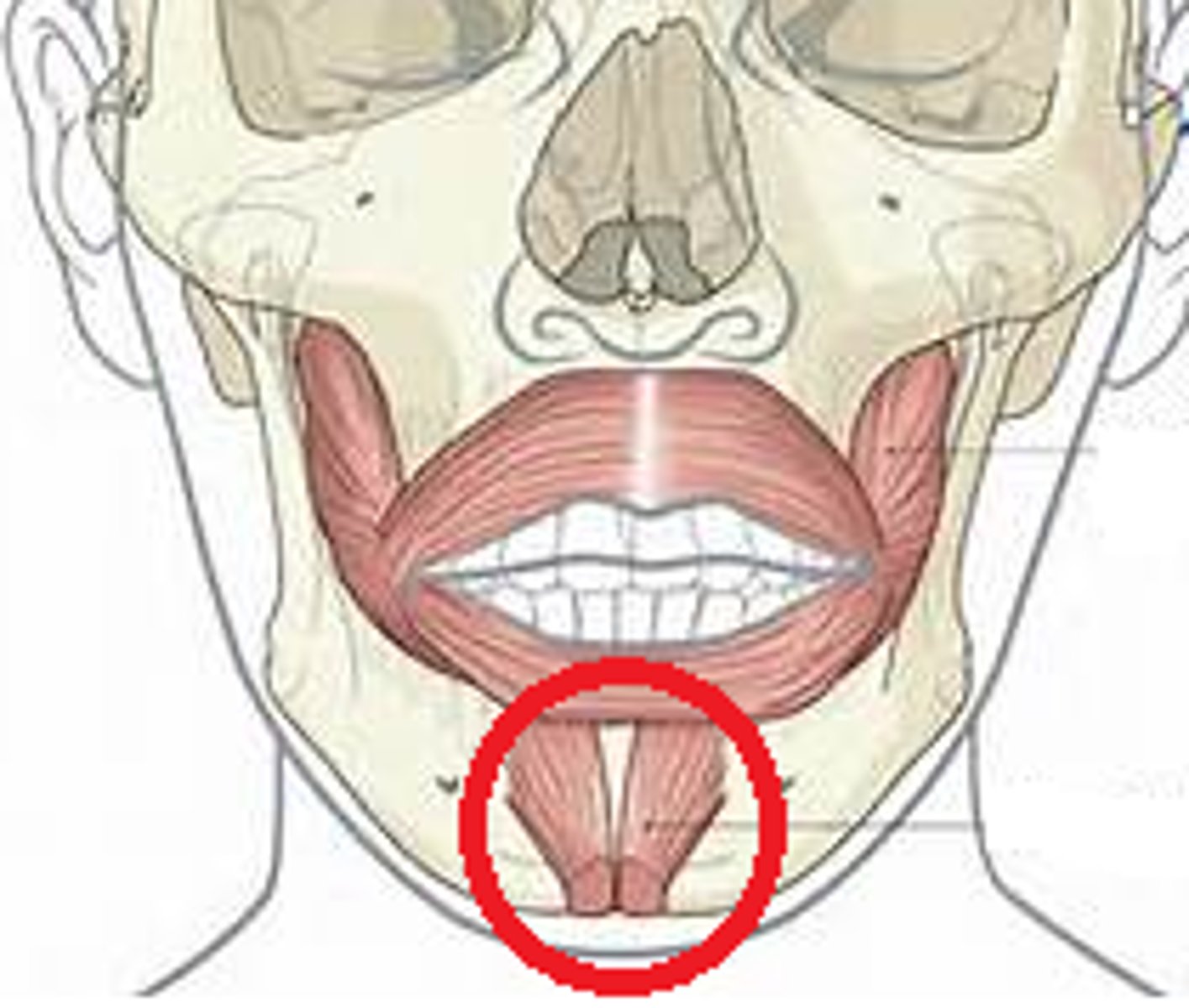RA I - Muscles of the Cranium, Face, and Neck
1/22
There's no tags or description
Looks like no tags are added yet.
Name | Mastery | Learn | Test | Matching | Spaced |
|---|
No study sessions yet.
23 Terms
Occipitofrontalis
Also known as the "epicranius muscle"; Broad muscle, covering the entire top of the skull; Double-bellied muscle consisting of two parts: Occipitalis portion and Frontalis portion; Draws scalp back and forth causing eyebrows to raise and wrinkles on the forehead; Origin is the base of the occipital bone, insertion is into the skin of the eyebrow and nose
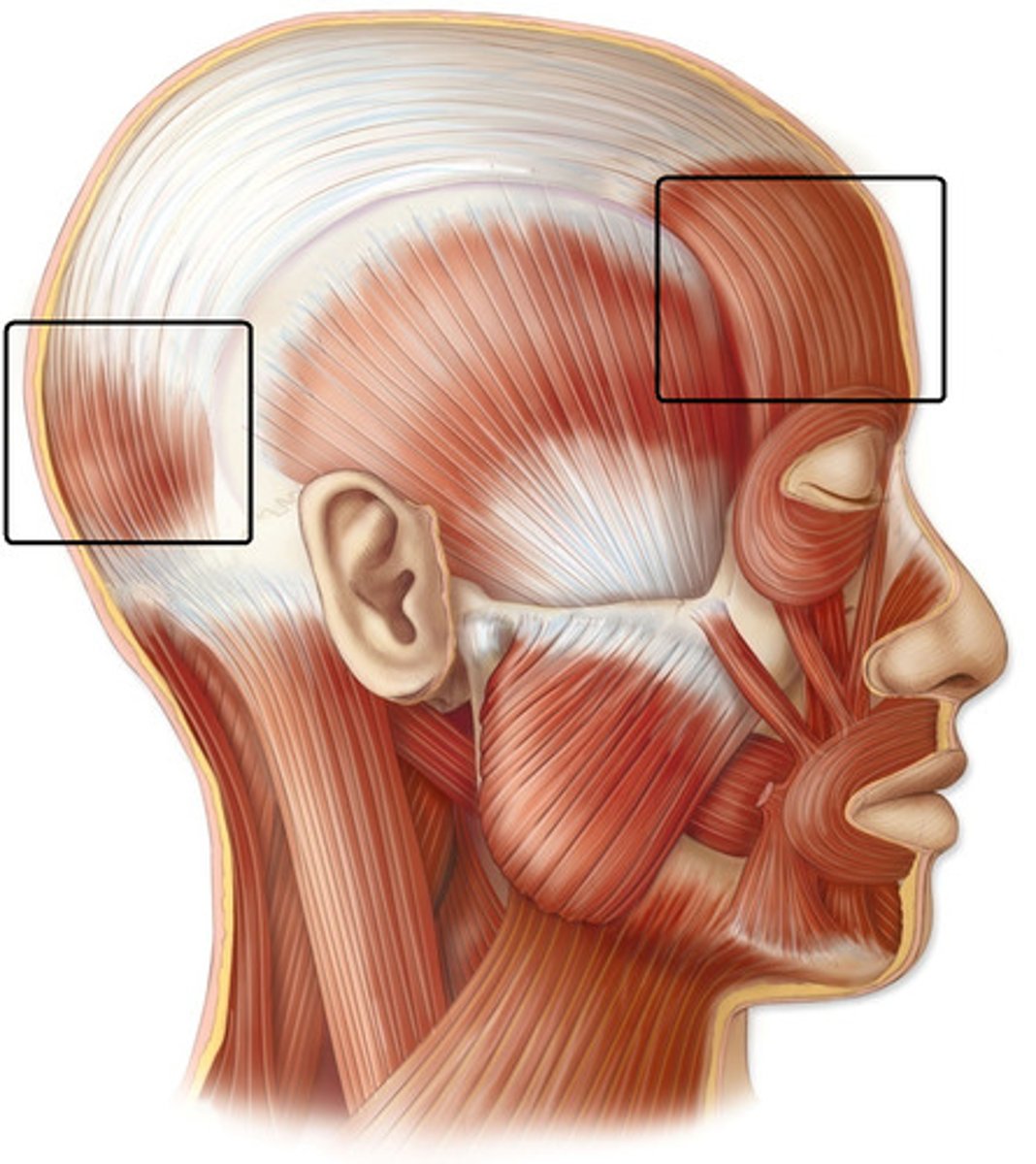
Frontalis
Frontal belly of the occipitofrontalis
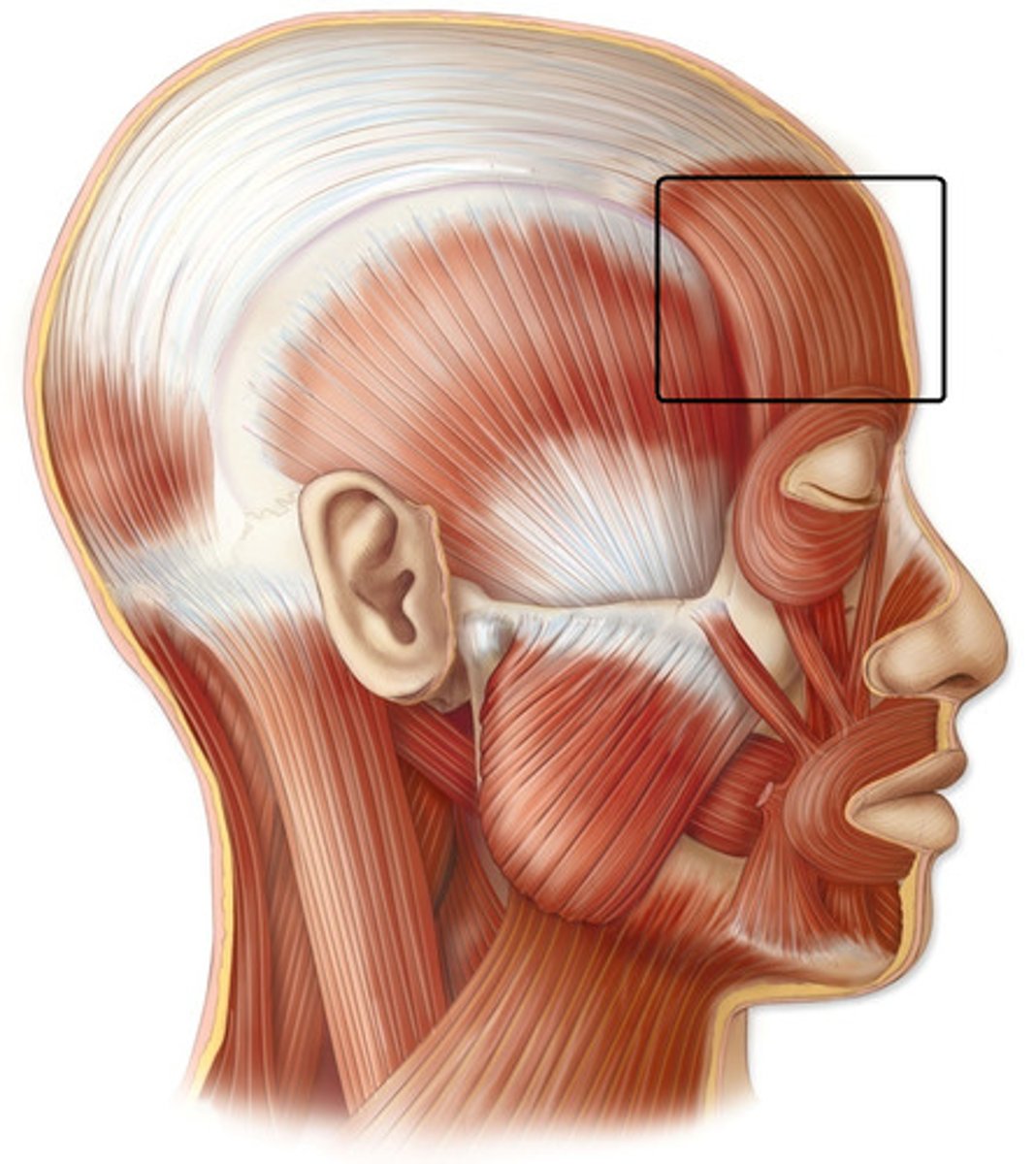
Occipitalis
Occipital belly of the occipitofrontalis
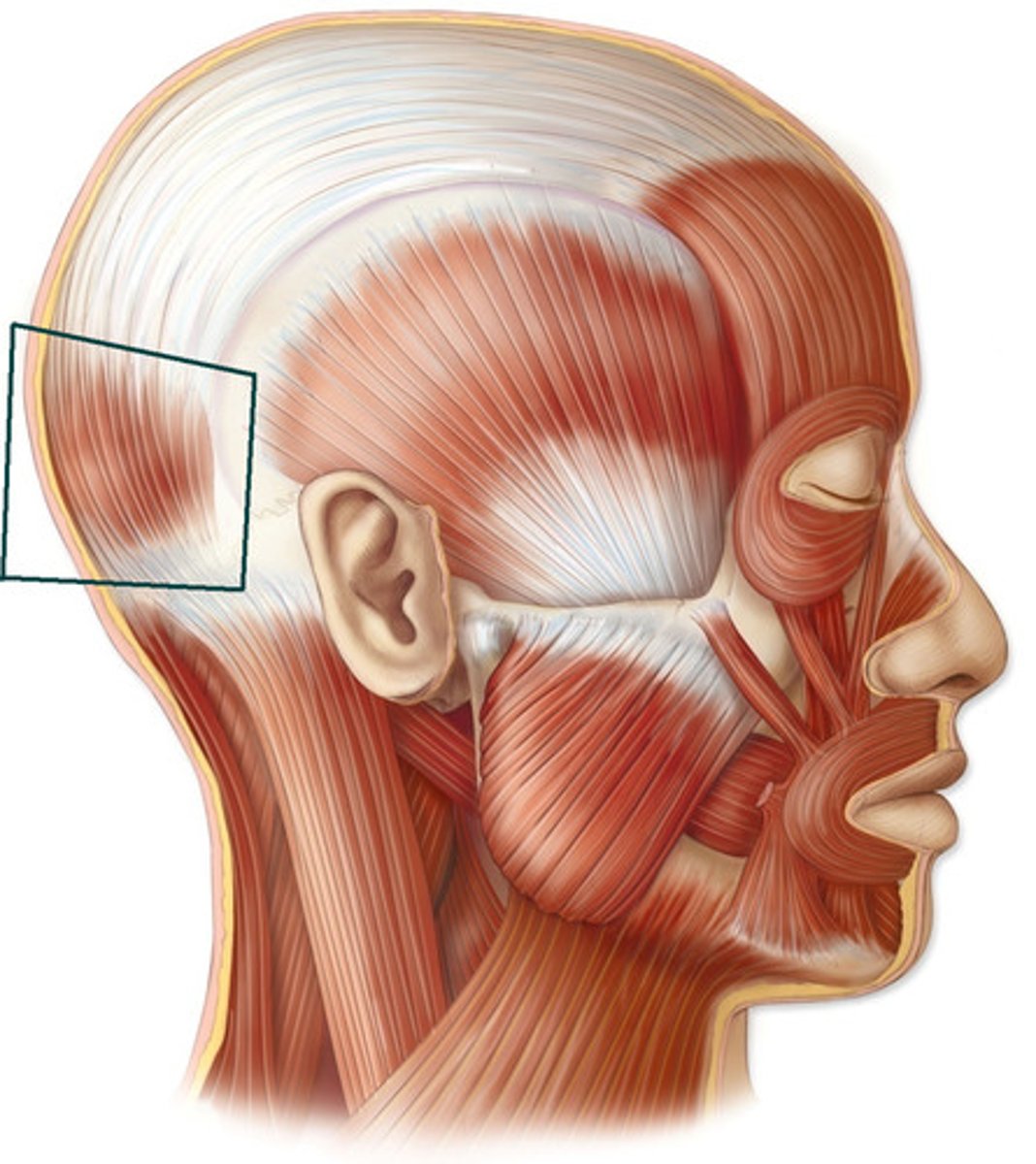
Oribicularis Oculi
Sphincter muscle around eye socket: Closes eyelid, Compresses the lacrimal sac, Wrinkles the forehead vertically; Causes Optic Facial Sulci: "Crow's Feet Wrinkles" found at the lateral corners of the eyes, acquired facial markings that appear and increase with age
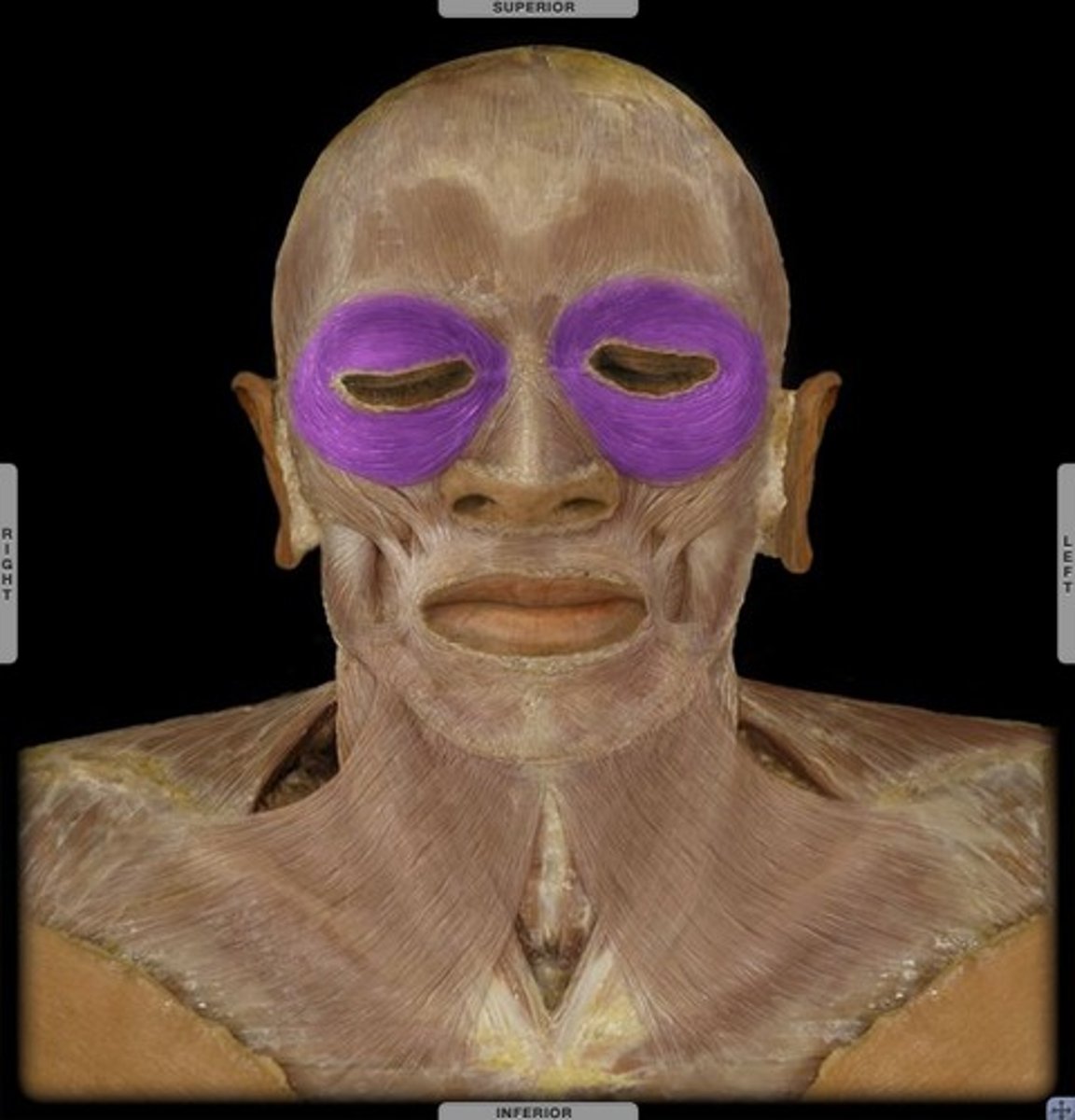
Corrugator
Pyramid-shaped muscle of facial expression; Lies underneath the frontalis and orbicularis oculi; Draws eyebrows medially and inferiorly (in and down), produces vertical furrows between the eyes; The "frowning" muscle (Corrugator Supercilii/Superciliary); Origin = At the bridge of the nose and the orbicularis oculi; Insertion = Into the skin of the eyebrow
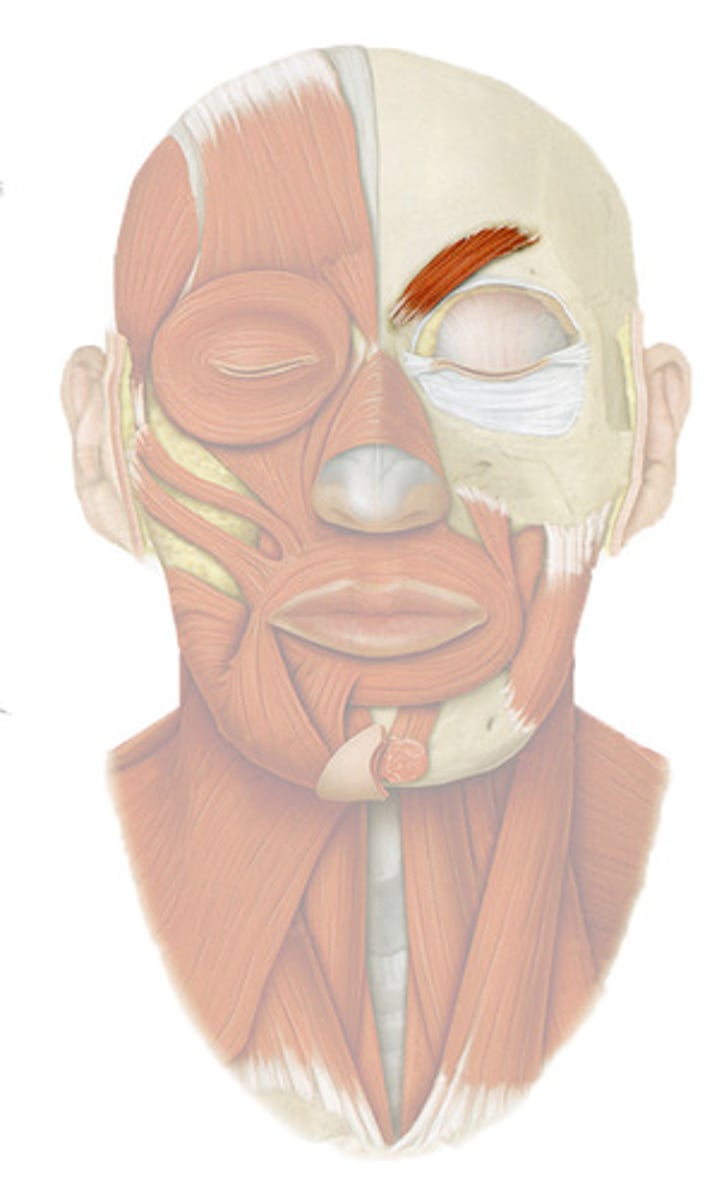
Levator Palpebrae Superioris
Runs from medial eye socket to superior tarsal plate of eyelid; Raises/opens the upper eyelid; Droopy eyelid known as “ptosis” indicates oculomotor nerve damage to this muscle; Creates an additional challenge to the embalmer and/or restorative artist to attempt to correct or lessen this defect; This muscle is not found on your diagrams; Origin = At the lesser wing of the sphenoid; Insertion = At the skin of the eyelid
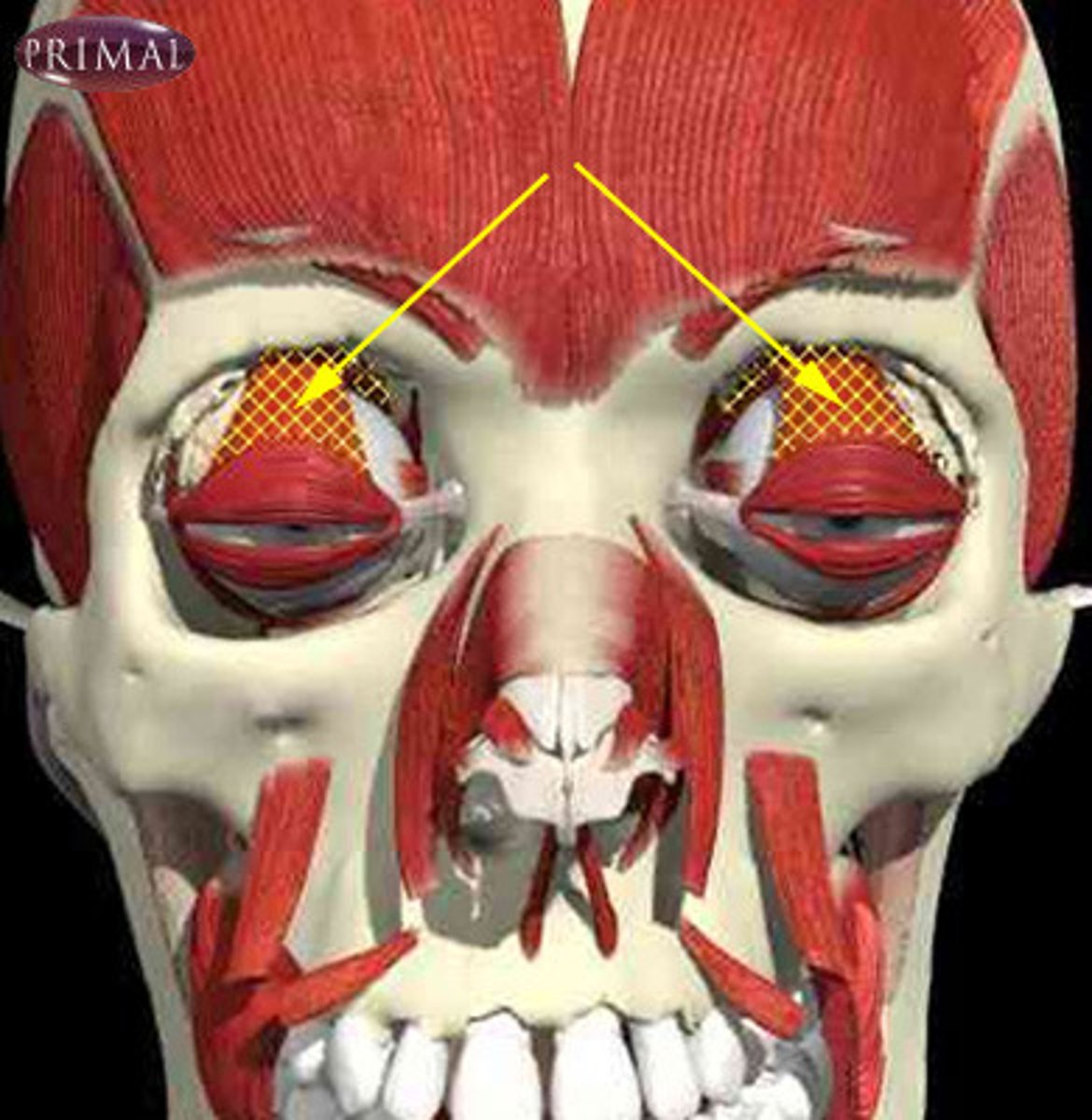
Procerus
Covers bridge of nose; Draws forehead down; Causes transverse and vertical wrinkles of forehead; Contributes to horizontal wrinkles between the eyes; Origin = At the bridge of the nose; Insertion = To the frontalis muscle
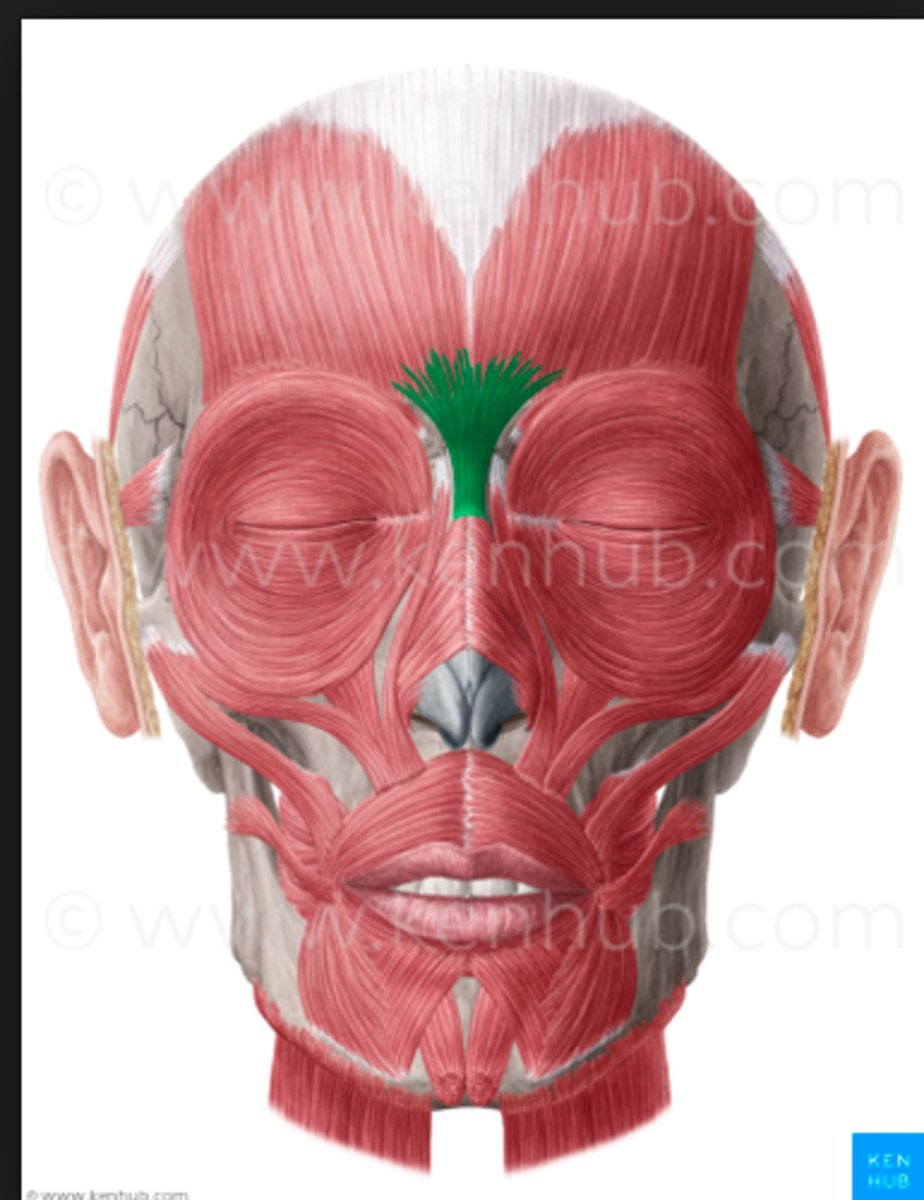
Platysma
Broad, thin muscle covering the anterior neck region; Location is submandibular and bilateral; Wrinkles neck and chest skin; Depresses mandible and anguli oris; Pulls down the lower lip when contracted; Origin = From fascia of deltoid and pectoralis major muscles; Insertion = Into the skin over the superior border of the mandible
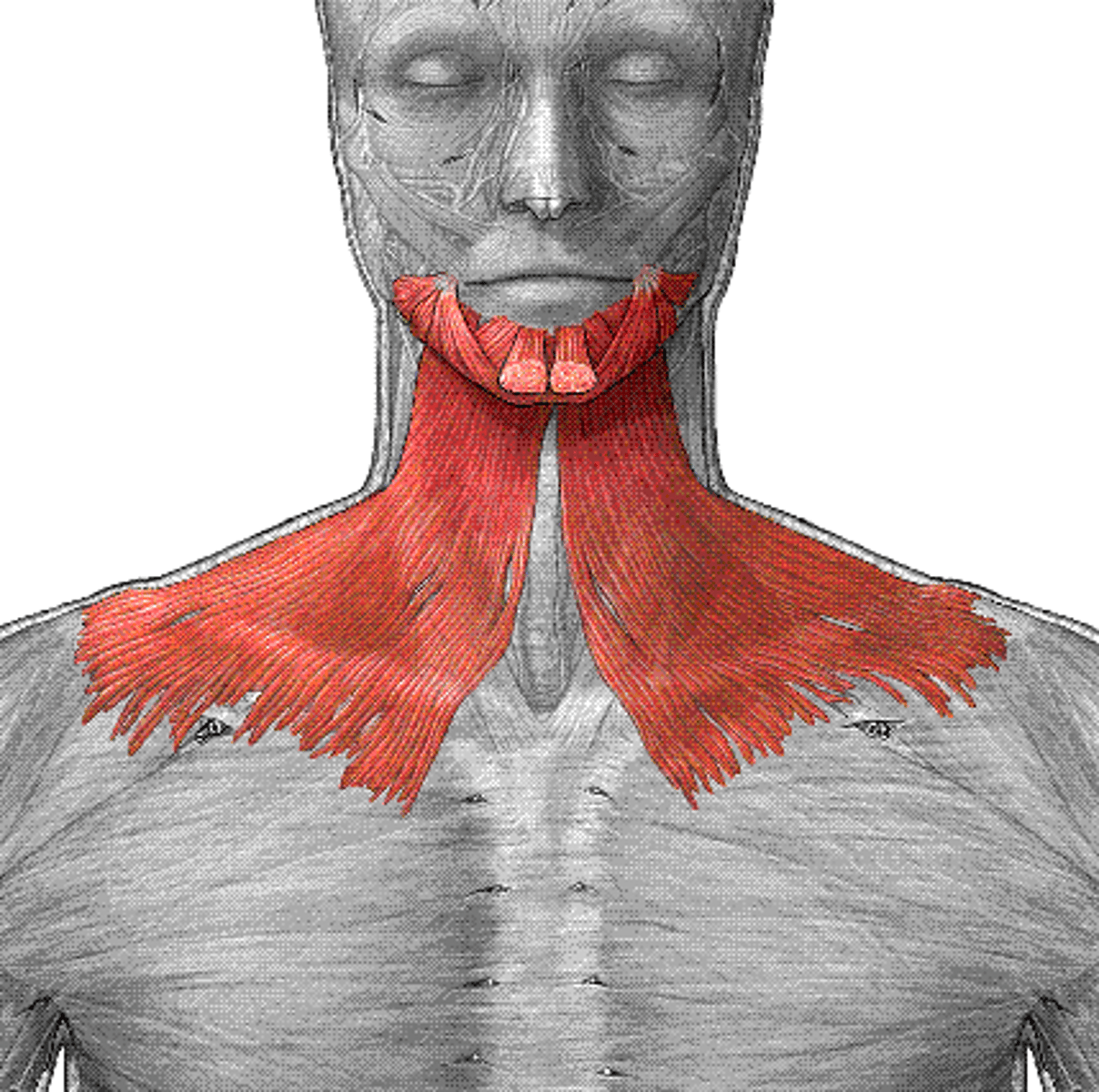
Sternocleidomastoid (SCM)
Thick muscle of the neck; Rotates and depresses head; Primary function: posterior movement of the head, extends the head; Secondary functions: Does NOT tilt the head side to side!; Gives anterior neck shape and depth; Widest part of the neck is measured between the two SCM's; Origin = At the manubrium and medial clavicle; Insertion = Into the mastoid process

Digastric
Double-bellied muscle of the neck; Retracts mandible; Draws hyoid bone forward and backward; Origin = The mastoid process; Insertion = Midline of the mandible
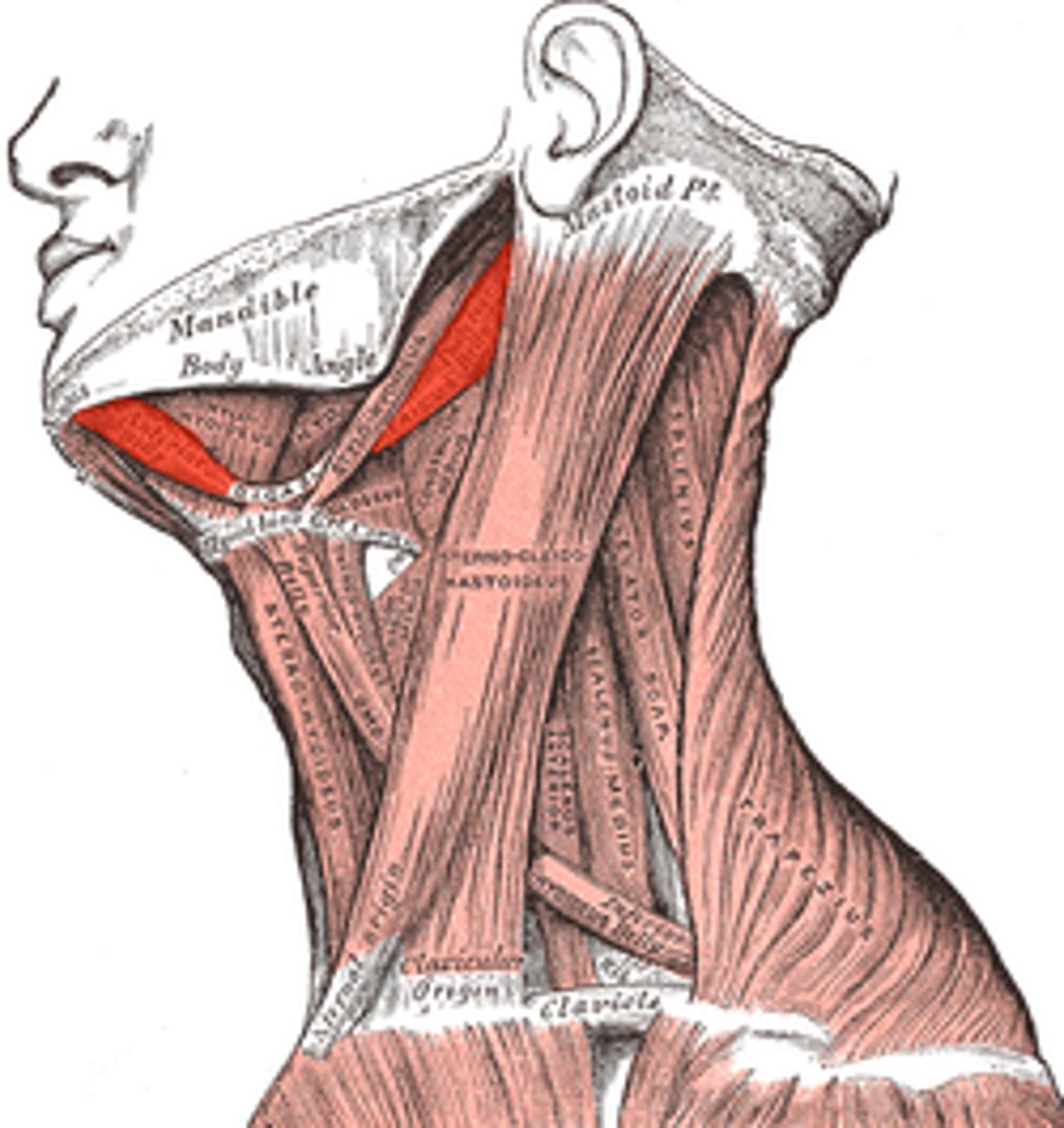
Temporalis
Thick, broad, fan-shaped muscle; Fills the temporal cavity; Needs specific attention if emaciated or atrophied; Function: Strongest of the muscles of mastication; Closes the mandible; Assists side-to-side movement of mandible; Origin = Originates from the temporal fossa; Insertion = Into the superior Into the superior mandible. More specifically, it inserts into the anterior portion (coronoid process) of the ramus of the mandible
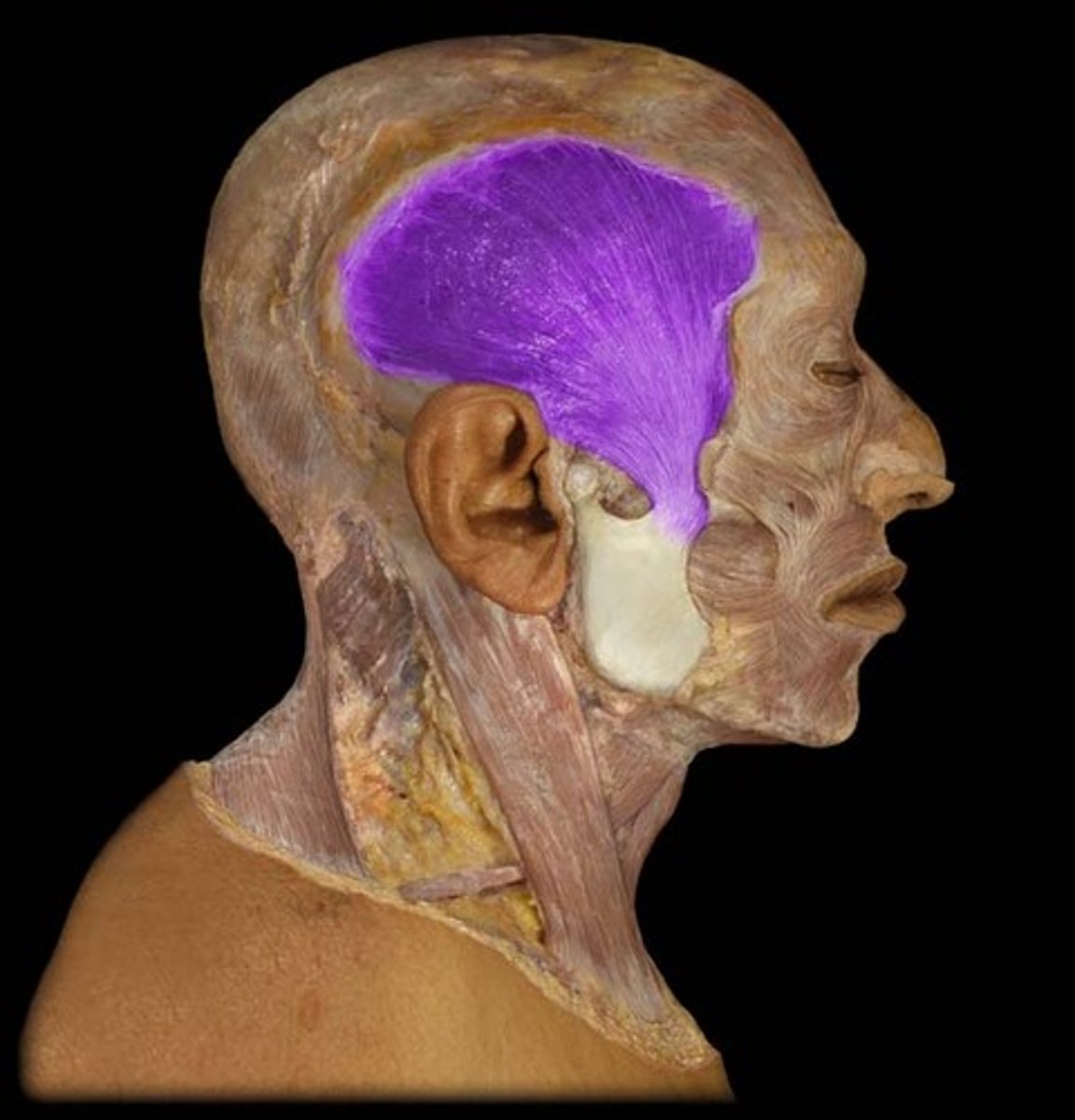
Masseter
A large, rectangular muscle of mastication; Aids in raising and lowering (closes) the mandible; Origin = From the zygomatic arch; Insertion = Into the lateral side, near the angle, of the mandible

Orbicularis Oris
Second of two sphincter muscles of the face, extending from the base of the nose to lower jaw/both cheeks; Flat band of muscles that encircles mouth; In upper and lower (mucous membranes) red lips and integumentary lips (fleshy lip); Closes lips, Compresses lips against cheeks, Shapes lips during speech, "puckering"; Origin = At nasal septum, maxilla, and mandible; Insertion = Into fascia of lips and at buccinator/other area muscles

Levator Labii Superioris Alaeque Nasi (LLSAN)
Muscle of facial expression; raises upper lip and dilates nostrils; Origin = nasal process of the maxilla; Insertion = cartilage of nose and flesh of upper lip

Levator Labii Superioris
Muscle of facial expression; elevates and extends upper lip; Origin = Maxilla; Insertion = skin and muscle of the upper lip
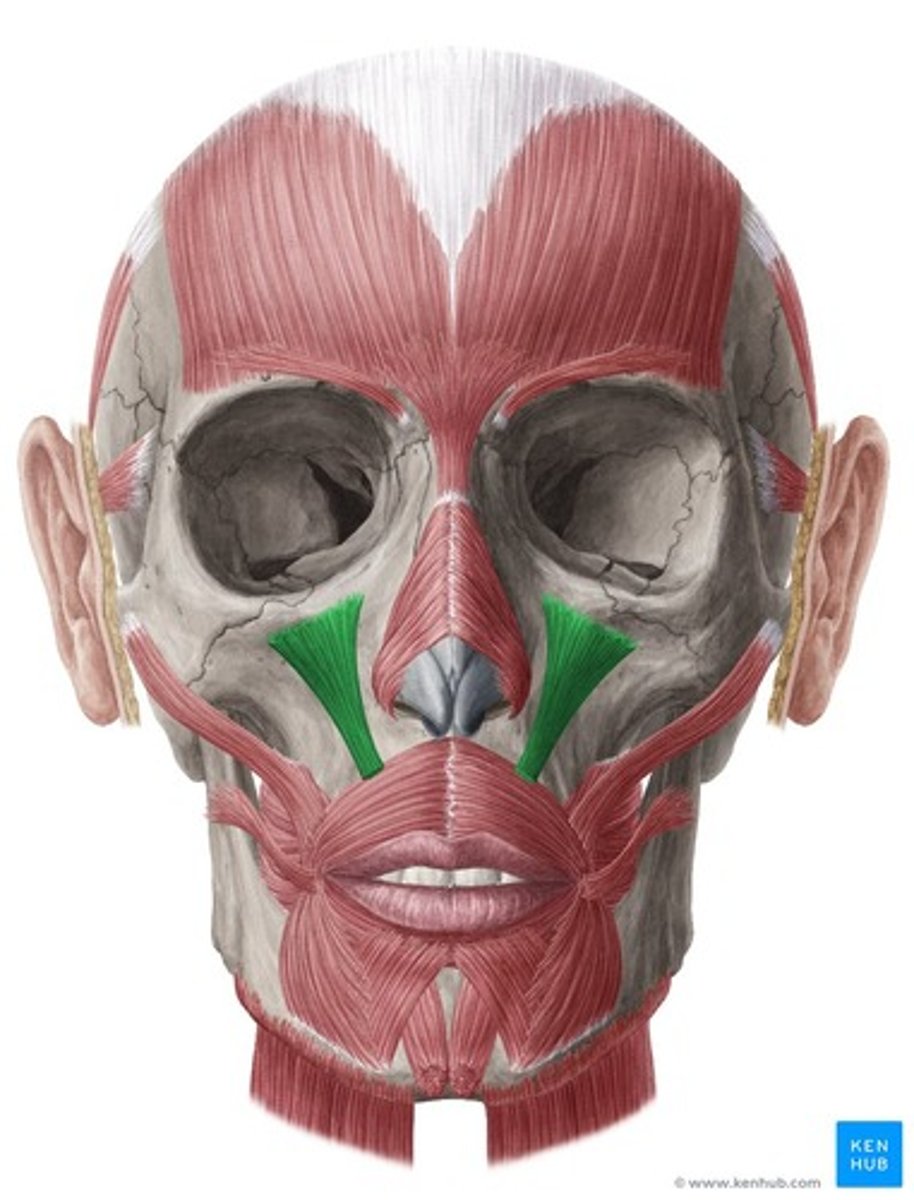
Levator Anguli Oris
Small muscle at angle of mouth; Elevates angle of the mouth (the lateral limit of the lateral limit of the lips line of closure); Origin = Maxilla; Insertion = Skin and muscle at the angle of the mouth
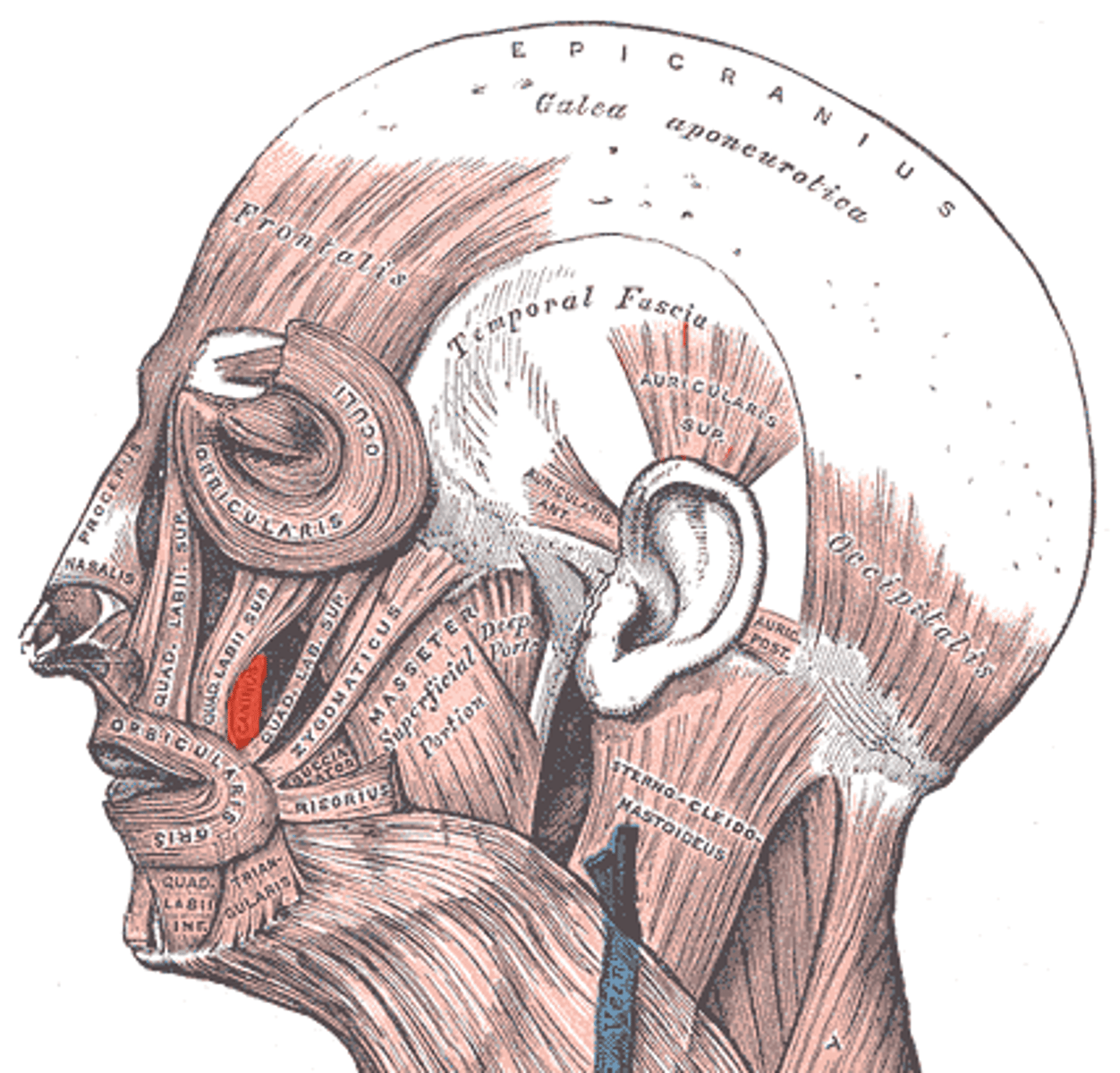
Zygomatic Minor
Facial muscle; Draws upper lip superiorly and laterally (up and out); Origin = zygomatic bone; Insertion = Muscle of the upper lip
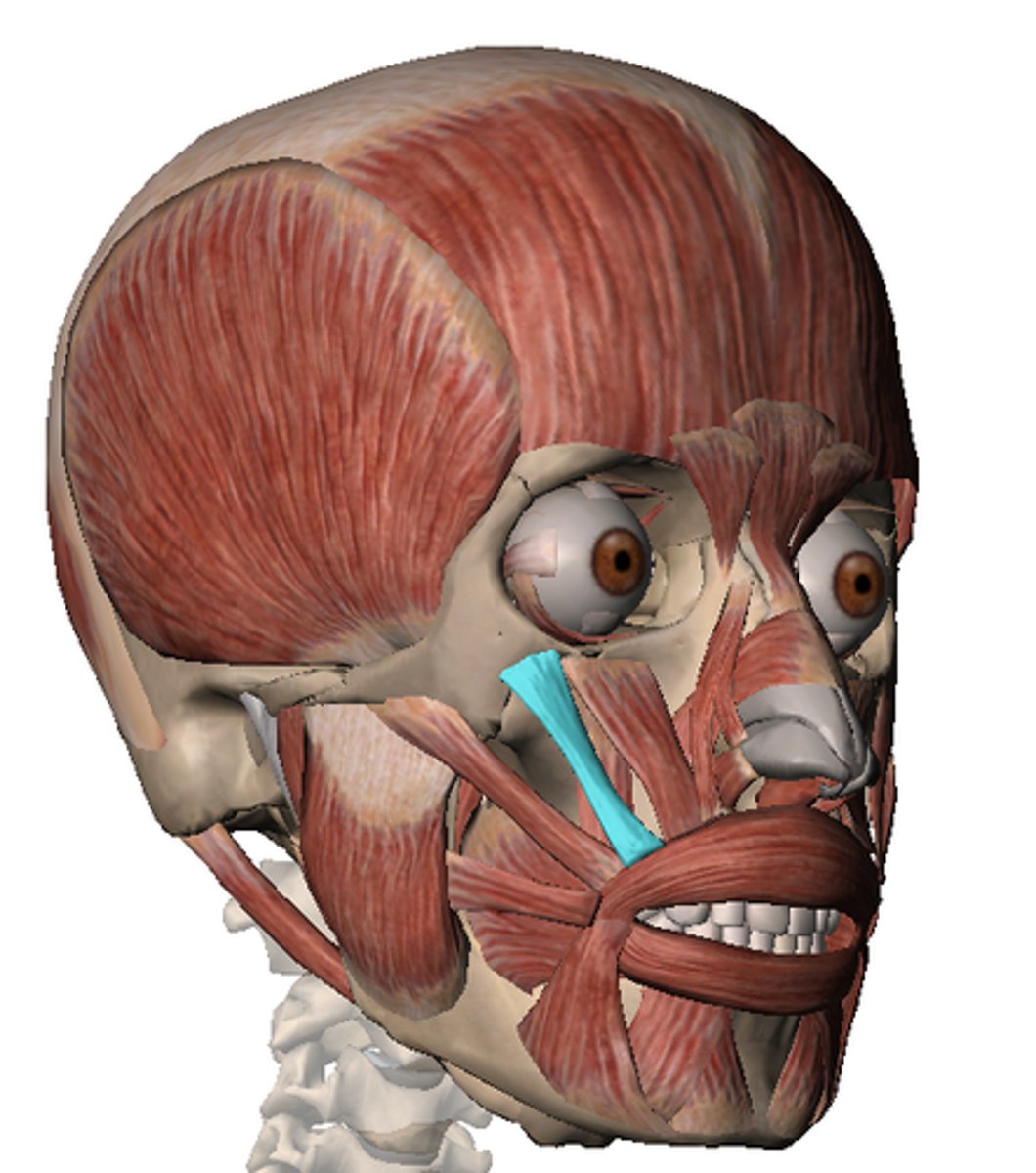
Zygomatic Major
Muscle of facial expression; Draws upper lip posteriorly, superiorly, and laterally; "smiling" muscle; Origin = zygomatic bone; Insertion = angle of the mouth
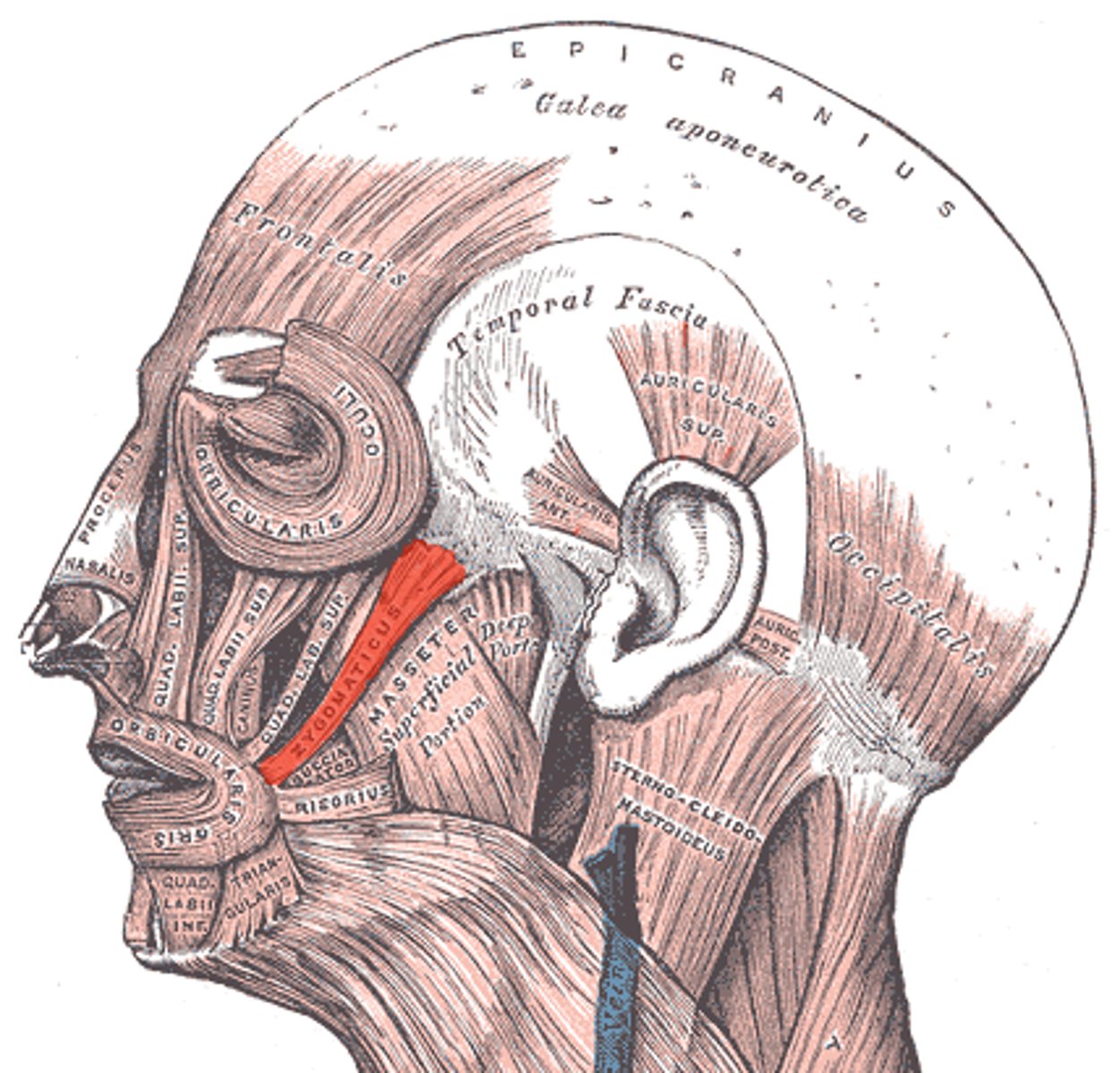
Buccinator
Principle muscle of cheek; makes up part of the angulus oris eminences (natural facial markings); Compresses cheeks, pulls angulus oris posteriorly, produces "sucking" action, the "trumpeters" muscle; Origin = alveolar process of the maxilla; Insertion = Into muscle of the mouth

Risorius
Muscle of facial expression; draws the angle (corner) of mouth posteriorly; the "false smile" muscle; Origin = From fascia of the platysma and masseter muscles; Insertion = into skin and muscle at the angle of the mouth

Depressor Anguli Oris
Muscle of facial expression; Depresses angle of mouth; Origin = Lower border of mandible; Insertion = Into lip near angle of mouth

Depressor Labii Inferioris
Muscle of facial expression; Depresses lower lip inferiorly and slightly laterally; Draws the lower lip down; Origin = Lower border of the mandible; Insertion = skin and muscle of the lower lip
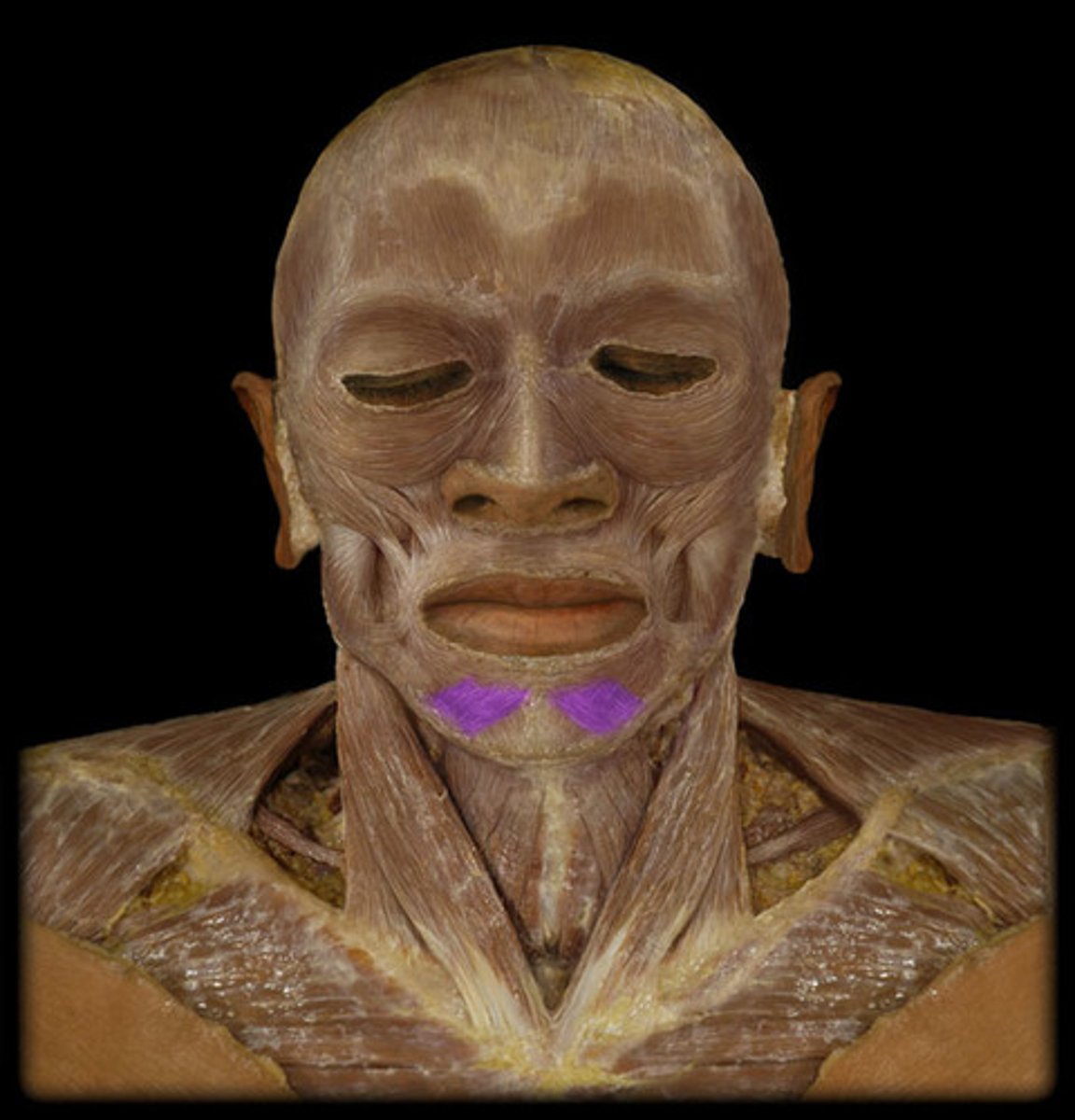
Mentalis
On tip of chin; Elevates and protrudes lower lip; Wrinkles skin over chin; Origin = Mandible; Insertion = Skin of chin
